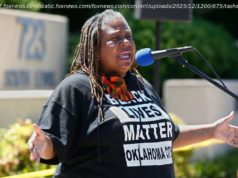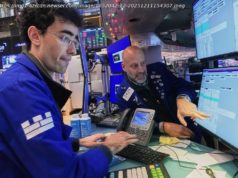The proposal would cover Manhattan south of 60th Street and would raise money for mass transit.
NEW YORK – Motorists would have to shell out $11.52 to drive into the busiest parts of Manhattan under a proposal commissioned by Democratic Gov. Andrew Cuomo to ease traffic congestion and raise vital funds for mass transit.
Trucks would pay $25.34 while taxi cabs, Uber rides and for-hire vehicles would be charged between $2 and $5 per ride. The pricing zone would cover Manhattan south of 60th Street.
The idea, called congestion pricing, involves using electronic tolling to charge vehicles for entering certain parts of town during especially busy times. The proposal is likely to run into stiff opposition from many commuters, businesses and lawmakers, who must approve portions of the plan and who have balked at congestion pricing in the past.
The amounts of the proposed surcharges are likely to change as state lawmakers, Cuomo and city leaders debate the details. Officials could also vary the surcharges based on the time of day, with the highest fees during rush hour.
Former Bronx Borough President Freddy Ferrer, a Metropolitan Transportation Authority board member who worked on a congestion pricing panel created by Cuomo, acknowledged there are going to be some naysayers but said, “It’s clear that the status quo is no longer acceptable.”
The panel released its proposal Friday.
London and Singapore already have congestion surcharges. Supporters of the idea say it will combat gridlock while raising revenue for transit. Skeptics, including Democratic Mayor Bill de Blasio, worry about the financial burden to middle-class and low-income commuters. Similar concerns doomed a congestion pricing plan from former Mayor Michael Bloomberg a decade ago.
Yasmin Sohrawardy, who drives from Queens into Manhattan twice a week for her job as a financial software developer, opposes any proposal to charge drivers.
“The people in the outer boroughs, who don’t have access to public transportation the way people do in Manhattan, can’t possibly afford this,” Sohrawardy said. “It’s going to be extraordinarily expensive. If you live in Manhattan, you can take subways, buses or taxis.”
Cuomo stopped short of fully endorsing the proposal’s details but said New York must address traffic and fix a subway system beset by breakdowns and delays. He noted that as a Queens native he understands the concerns of commuters.
“I have outer-borough blood in my veins, and it is my priority that we keep costs down for hardworking New Yorkers and encourage use of mass transit,” he said.
Only 4 percent of the residents of Queens, the Bronx, Brooklyn or Staten Island, about 118,000 people, commute to Manhattan in vehicles, the task force says. Of those, fewer than 5,000 are considered poor.
The fees on taxis and for-hire vehicles could take effect within a year, followed by trucks and then cars in 2020, according to the report. The task force said that none of the fees should be charged until mass transit repairs are made.
The task force calculated the amount of the fees based on existing bridge tolls. It suggested that tax credits could be created for low-income motorists to reduce the cost of the surcharges on those who can least afford them.
Uber said it supports congestion pricing if it’s applied to all vehicles and the revenue goes to mass transit. But the Independent Drivers Guild, which represents 60,000 drivers for Uber, Lyft and other ride-hailing companies, said surcharges could be “devastating” to drivers if they are forced to absorb the higher costs instead of passing them to passengers.
De Blasio called the new proposal a “step in the right direction” compared to earlier versions. But he wants a guarantee that revenue wouldn’t be used to fill holes in the state budget and said higher income taxes on wealthy earners might be a better way of raising money for transit.
“We need to know a lot more,” he said on WNYC radio Friday. “What we still don’t see is money … being put in a lock box that would only fund transit in New York City.”
Republican Senate Leader John Flanagan, of Long Island, said earlier this month that while he’s open to discussing congestion pricing he wasn’t ready to support the idea.
“No, not what I’ve listened to,” he said.
A spokesman said Friday that Flanagan hadn’t reviewed the details of the new proposal.
Some lawmakers have suggested exemptions for drivers going to medical appointments or taking children to and from school.
Congestion pricing has long been a goal of environmental groups and transit advocates. Nick Sifuentes, director of the Tri-State Transportation Campaign, noted that travelers using the subway, buses, ferries and trains already pay a fare to reach Manhattan.
“The only folks who don’t pay at all are drivers – and those cars are clogging our streets, polluting our air and harming the economy,” he said.
Send questions/comments to the editors.






